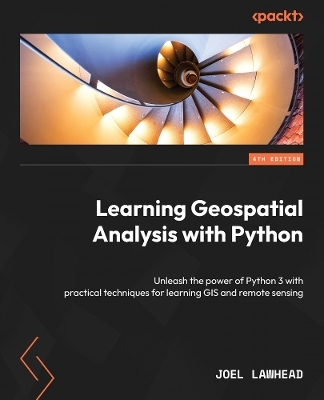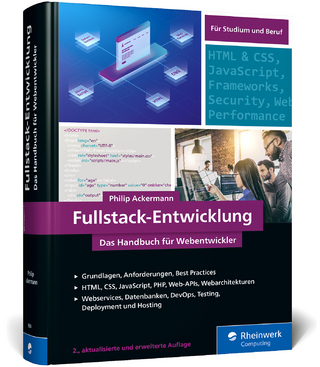
Learning Geospatial Analysis with Python
Packt Publishing Limited (Verlag)
978-1-83763-917-5 (ISBN)
Key Features
Create GIS solutions using the new features introduced in Python 3.10
Explore a range of GIS tools and libraries, including PostGIS, QGIS, and PROJ
Identify the tools and resources that best align with your specific needs
Purchase of the print or Kindle book includes a free PDF eBook
Book DescriptionGeospatial analysis is used in almost every domain you can think of, including defense, farming, and even medicine. In this special 10th anniversary edition, you'll embark on an exhilarating geospatial analysis adventure using Python.
This fourth edition starts with the fundamental concepts, enhancing your expertise in geospatial analysis processes with the help of illustrations, basic formulas, and pseudocode for real-world applications. As you progress, you’ll explore the vast and intricate geospatial technology ecosystem, featuring thousands of software libraries and packages, each offering unique capabilities and insights. This book also explores practical Python GIS geospatial applications, remote sensing data, elevation data, and the dynamic world of geospatial modeling. It emphasizes the predictive and decision-making potential of geospatial technology, allowing you to visualize complex natural world concepts, such as environmental conservation, urban planning, and disaster management to make informed choices. You’ll also learn how to leverage Python to process real-time data and create valuable information products.
By the end of this book, you'll have acquired the knowledge and techniques needed to build a complete geospatial application that can generate a report and can be further customized for different purposes.What you will learn
Automate geospatial analysis workflows using Python
Understand the different formats in which geospatial data is available
Unleash geospatial tech tools to create stunning visualizations
Create thematic maps with Python tools such as PyShp, OGR, and the Python Imaging Library
Build a geospatial Python toolbox for analysis and application development
Unlock remote sensing secrets, detect changes, and process imagery
Leverage ChatGPT for solving Python geospatial solutions
Apply geospatial analysis to real-time data tracking and storm chasing
Who this book is forThis book is for Python developers, researchers, or analysts who want to perform geospatial modeling and GIS analysis with Python. Basic knowledge of digital mapping and analysis using Python or other scripting languages will be helpful.
Joel Lawhead is a PMI-certified Project Management Professional (PMP), a certified GIS Professional (GISP), and vice president of NVision Solutions, Inc., an award-winning firm specializing in geospatial technology integration and sensor engineering for NASA, FEMA, NOAA, the US Navy, and many other commercial and non-profit organizations. Joel began using Python in 1997 and started combining it with geospatial software development in 2000. He has authored multiple editions of Learning Geospatial Analysis with Python and QGIS Python Programming Cookbook, both from Packt. He is also the developer of the open source Python Shapefile Library (PyShp) and maintains a geospatial technical blog.
Table of Contents
Learning about Geospatial Analysis with Python
Learning about Geospatial Data
The Geospatial Technology Landscape
Geospatial Python Toolbox
Python and Geospatial Algorithms
Creating and Editing GIS Data
Python and Remote Sensing
Python and Elevation Data
Advanced Geospatial Modeling
Working with Real-Time Data
Putting It All Together
| Erscheinungsdatum | 26.08.2023 |
|---|---|
| Verlagsort | Birmingham |
| Sprache | englisch |
| Maße | 191 x 235 mm |
| Themenwelt | Mathematik / Informatik ► Informatik ► Programmiersprachen / -werkzeuge |
| Mathematik / Informatik ► Informatik ► Theorie / Studium | |
| Naturwissenschaften ► Geowissenschaften ► Geografie / Kartografie | |
| ISBN-10 | 1-83763-917-5 / 1837639175 |
| ISBN-13 | 978-1-83763-917-5 / 9781837639175 |
| Zustand | Neuware |
| Informationen gemäß Produktsicherheitsverordnung (GPSR) | |
| Haben Sie eine Frage zum Produkt? |
aus dem Bereich


